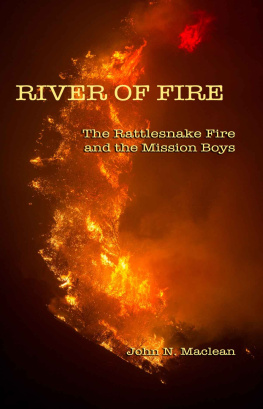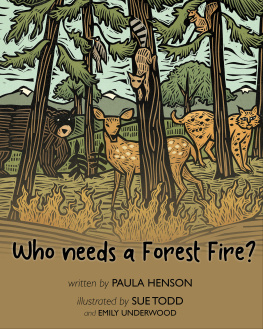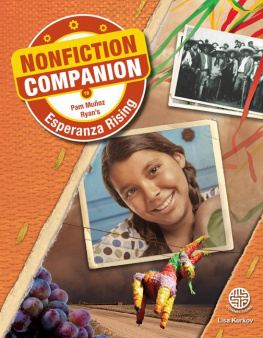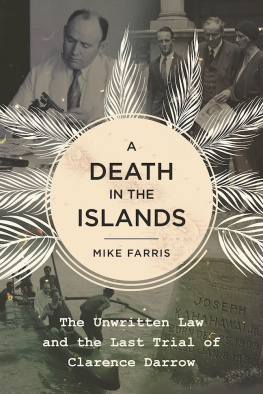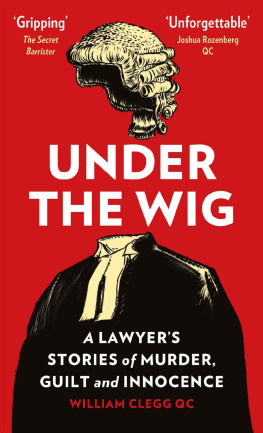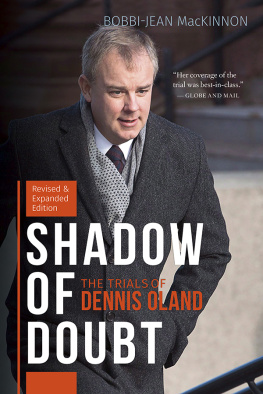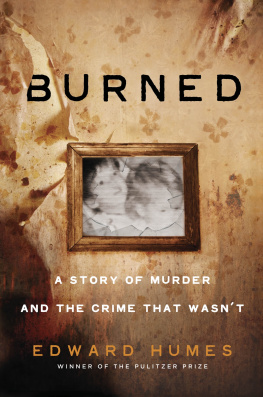THE ESPERANZA FIRE
THE
ESPERANZA
FIRE
Arson, Murder, and the Agony of Engine 57

John N. Maclean
COUNTERPOINT | BERKELEY
The Esperanza Fire
Copyright 2013 John N. MacClean
All rights reserved under International and Pan-American Copyright Conventions. No part of this book may be used or reproduced in any manner whatsoever without written permission form the publisher, except in the case of brief quotations embodied in critical articles and reviews.
Library of Congress Cataloging-in-Publication Data is available.
ISBN: 978-1-61902-148-8
Cover design by Faceout Studios
Interior design by Maria E. Torres, Neuwirth & Associates, Inc.
COUNTERPOINT
1919 Fifth Street
Berkeley, CA 94710
www.counterpointpress.com
Distributed by Publishers Group West
10 9 8 7 6 5 4 3 2 1
To Ashlyn, Bronwyn, Evan Fitzroy, Larsen Muir,
and Paisley Kathleen, with love.
ACKNOWLEDGMENTS
I was attending a fire conference in Reno, Nevada, when a Forest Service engine captain I knew, Richard Gearhart, strode up and asked in a bold manner, Are you going to do a book on the Esperanza Fire? Gearhart then brought over Norm Walker, the division chief who had been in charge of the Forest Service engines the day of the Esperanza Fire, and he went over the story and its aftermath. My efforts over the next five years to pull together this account would not have been possible without the cooperation of Gearhart, Walker, the three other Forest Service captains who were with Engine 57 at the fire: Anna Dinkel, Freddie Espinoza, and Chris Fogle; their crews, too, fully cooperated. The captains along with Dr. James Hepworth and Mike Rogers read drafts of the text; any errors, however, are my responsibility.
I gratefully acknowledge the cooperation of many Engine 57 family members, and particularly of Vivian Najera, Daniel Najeras aunt, who acted as informal family liaison for me. Rick Reeder, a fire behavior analyst and my first guide at the fatal site, generously shared his research and photo archive. Concerning the arson story, I especially thank Mike Hestrin and Mike Mayman, the prosecutors, and Detective Scott Michaels. Richard De Atley of the Riverside Press-Enterprise was a great help with court matters; his newspapers general coverage of the fire could be counted on as thorough and reliable. Julie Hutchinson, Cal Fires public information officer, gave important assistance. Many others, some of whose names appear in the text, made generous contributions of time and memories. A more detailed account of the books making can be found in A Time for Fire, a story I wrote for Wildfire Magazine that is available on JohnMacleanBooks.com.
THE ESPERANZA FIRE
CONTENTS
W HEN A JURY RETURNS TO a packed courtroom to announce its verdict in a capital murder case, every noise, even a scraped chair or an opening door, resonates like a high-tension cable snap. Spectators stop rustling in their seats; prosecution and defense lawyers and the accused stiffen into attitudes of wariness; the judge looks on owlishly; even the court bailiff, who experiences too much of humanitys dark side, often stands to attention for this moment. In that atmosphere of heightened expectation, the jury entered a Riverside County Superior Court room in southern California to render a decision in the trial of Raymond Oyler, charged with setting the Esperanza Fire of 2006, which killed a five-man Forest Service engine crew sent to fight the blaze.
The jurors cast quick glances around the courtroom, avoiding eye contact, and tried to wipe any hint of the verdict off their faces as they took their seats. For more than a week of deliberations, they had been semisequestered, and sheriffs deputies had escorted them to and from the jury room. The special security measures had been put in place by Judge W. Charles Morgan, who had mysteriously stopped the trial during the final arguments, closed the courtroom, and called in the jurors one by one to question them. Speculation of a mistrial ran rampant when news leaked of an attempt at jury tampering. But the crisis passed, the closing arguments concluded, and the jury retired.
As the jurors found their chairs, an extra half dozen armed sheriffs deputies stood by the defense table where Oyler, in a sober gray suit, sat unshackled. Sheriffs Deputy David Holland, the court bailiff, warned the spectators against any outburst. If your emotions get the best of you, please leave the courtroom, he said.
The spectators, some of whom had driven many miles and arrived breathless at the last minute, divided like families at a rivalrous church wedding. Firefighters, relatives of the victims, and their supporters filled pew-like benches on the side of the courtroom nearest the jury box. The fire people looked scrubbed, upright, and unspeakably sad. On the other side of the courtroom sat Oylers family and friends from southern Californias Banning Pass, where the 38-year-old auto mechanic had lived and where the fatal wildfire had burned. They were scattered along a couple of rear benches as far from the jury as possible. Several had napped, nodded, and cast hostile glances during the trial, but there had been no unruly behavior, at least not in the courtroom.
The Oyler clan appeared both hopeful and apprehensive. They had reason for a glimmer of optimism, for the trial had been lengthy and complex. The prosecution had presented no physical evidence to tie Oyler absolutely to the Esperanza Fire. Instead, prosecutors had sought to prove that a string of twenty-three arson fires in the Banning Pass beginning in the spring of 2006 had been the work of one person, and that that person was Raymond Oyler. The ignition devices and locations of the fires showed unmistakable similarities, the prosecutors argued, and followed a classic evolutionary pattern for serial arson, becoming more efficient and destructive over time, and finally deadly. DNA matches, witnesses, tire tracks, and surveillance camera images linked Oyler to several previous fires in the series, and the Esperanza Fire followed the general pattern: the ignition device, for example, was made, like many of the others, with stick matches bound to a Marlboro cigarette, his favorite brand, by a bluish-green rubber band. The prosecutions case depended on the jury understanding how the totality of evidence formed a pattern that had been engineered, as the chief prosecutor Michael Hestrin charged, by a lone man bent on destruction. Adding to the suspense, the legal stakes in the trial were the highest they had ever been in a case like this one: to this date, no one had ever been convicted of murder for setting a wildland fire, even though arson wildfires had caused many deaths and hundreds of arsonists had been caught and punished with fines and prison time.
The jurors, eight women and four men, had fought a long, hard battle to reach a verdict. I didnt want to give it away when we walked in, but it was hard to keep an expression off your face, said one juror. The foreman, Don Estep, handed the court bailiff a thick sheaf of verdict forms. As Judge Morgan read through them and minutes ticked by, the tension grew almost unbearable.
It felt almost like we were in church or at a funeral while the judge read the verdict forms, said the aunt of one of the victims.
The case against Oyler proceeded with what for the legal system was nearly the speed of light. After the fire, Oyler was identified as a possible suspect in less than forty-eight hours, arrested in less than a week, and tried in less than three years. This happened even though Oyler had initially been dismissed as a suspect by nearly everyoneRiverside County homicide detectives, the FBI, and others. We almost didnt investigate him, said Scott Michaels, a Riverside County homicide detective who pursued Oyler despite opposition. Senior investigators werent impressed with the Oyler connection, not at first, because Oyler was linked only to a previous fire, days earlier, and he did not fit the standard FBI profiles for a serial arsonist. Overwhelmed by a flood of leads about the Esperanza Fire and concentrating on more likely suspects, Michaels superiors ordered him to work on leads directly related to the Esperanza Fire. After a shouting match with his sergeant, Michaels kept after Oyler, at the risk of his career. His vindication came in dramatic fashion during a meeting of quarreling law enforcement officials, with news that stunned everyone and sent Michaels off to make an arrest.
Next page


